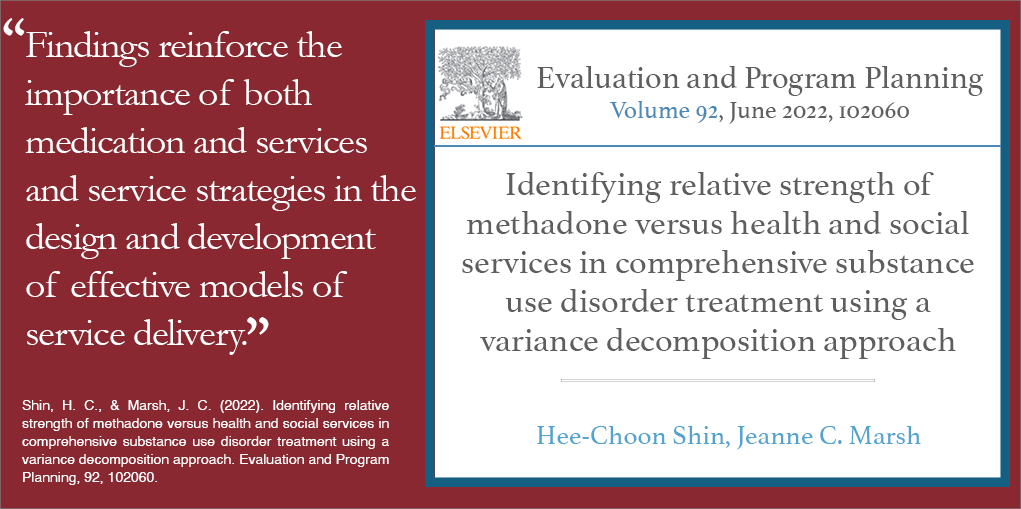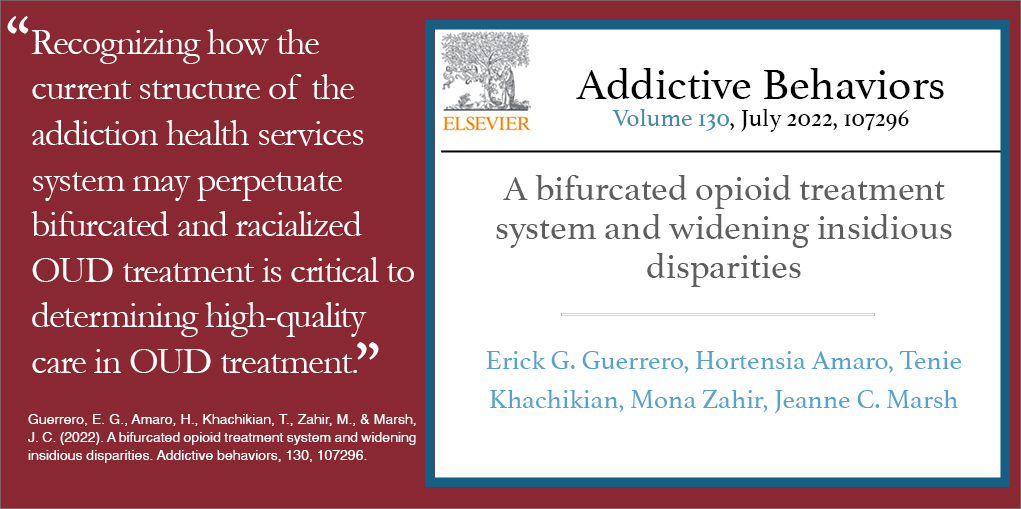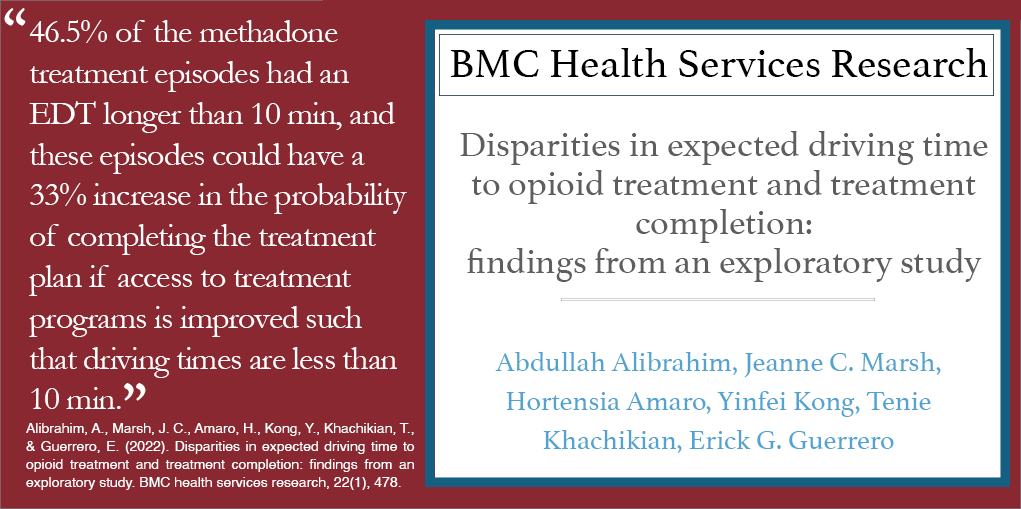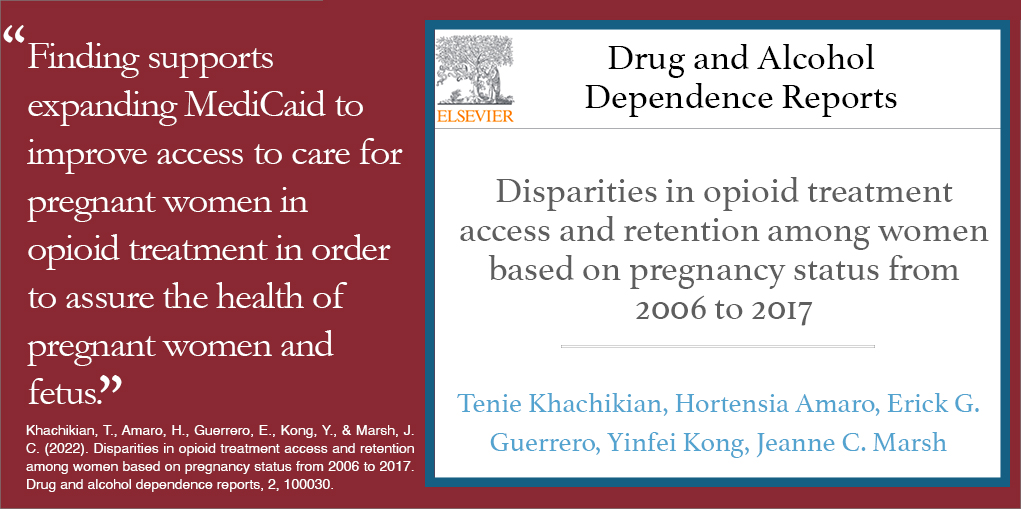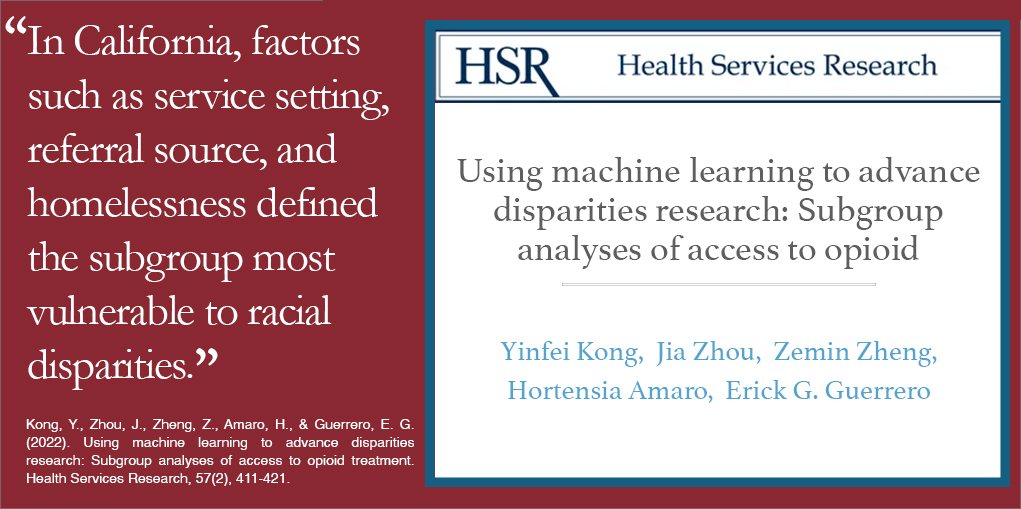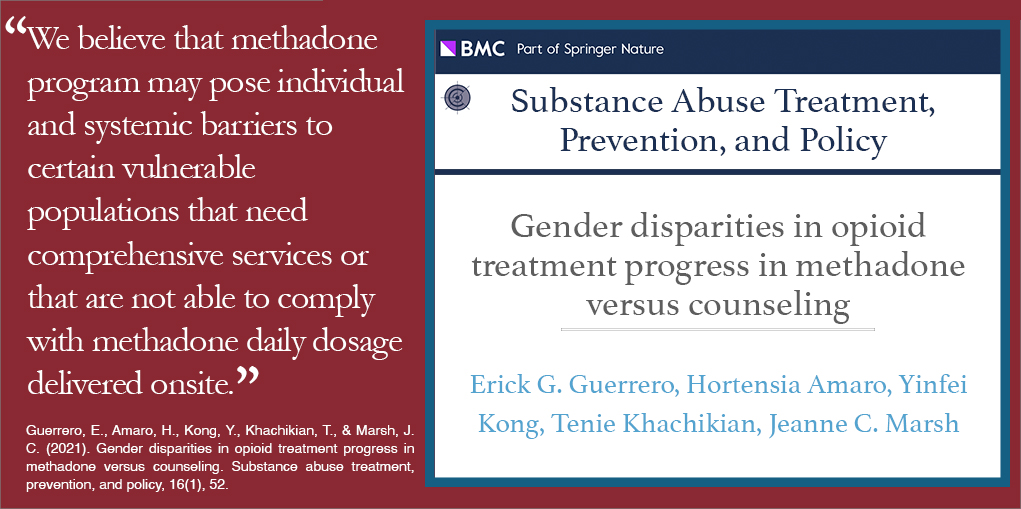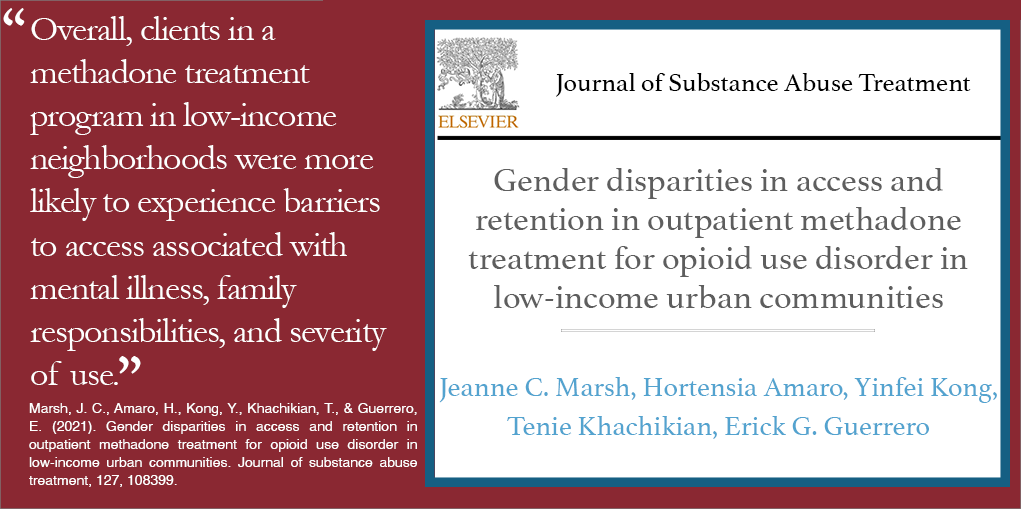What Researchers Discovered about Drug Treatment Outcomes among Different Racial/Ethnic & Gender Groups
Disparities research on drug treatment effectiveness often explores Black and White group comparisons, which has led to limited research on Black, Latino, and White groups. Comprehensive social services and substance abuse treatment (SAT) are strongly linked to decreases in substance use and improved social functioning and health for clients. Little research has been conducted on race-specific gender differences as it relates to the improvement of comprehensive and culturally competent SAT for these groups. To better understand gender disparities in this area among Black, Latino and White groups, Dr. Erick Guerrero of the University of Southern California and his colleagues studied not only SAT outcomes for these groups, but also existing gender-based differences within the groups. The research team further examined whether gender plays a role in posttreatment substance use.
Findings published in the Journal of Substance Abuse Treatment by Dr. Guerrero and his team show that clients from different racial/ethnic and gender backgrounds have different responses to SAT. Researchers analyzed survey data collected from the National Treatment Improvement Evaluation Study (NTIES) considering 59 service delivery organizations and 1,812 Black, 486 Latino and 844 White clients. The study investigated the role of client’s receipt of key services and the quality of the client–provider relationship on client post-treatment drug use. Clients struggling with substance use disorder also have other service needs for mental health, domestic violence counseling, health care services, etc. Specific supplementary social and health services have been linked to positive client outcomes, including provision of health, mental health, transportation and employment services. Previous studies also show outcomes are most improved when these services match client-specific needs. The duration of treatment and a positive client-provider relationship are also helpful predictors of improved treatment outcomes for clients.
Guerrero and his team highlight that “few studies have examined the connection between use of specific components of comprehensive services and posttreatment substance use” and it highlights how identifying measures that help decrease drug use posttreatment by these groups can assist in providing pertinent information for adapting provider services based on client needs and optimum outcomes, particularly in the area of culturally competent treatment practices, which are designed to meet the needs of individual subgroups. Past research has shown that while all racial/ethnic and gender groups benefit from SAT, women often have more severe substance use issues and social/health issues in comparison to men. Less is generally known about effective SAT for Latinos because typically there are inadequate sample numbers for this group.
Overall, findings based on this sample group show the following:
MEN
- Men were more apt to have a history of full-time employment.
WOMEN
- Women in all racial/ethnic groups desired and received more targeted services based on their needs.
- Women in all racial/ethnic groups recounted more positive interactions with service providers.
- Women in all groups were more likely to reside with a minor child and have a domestic violence history.
- The amount and type of services received was consistent across the board for women with women in all groups receiving more services overall than their male counterparts, particularly services related to their roles mothers and partners like child care and transportation.
BLACKS
- For Blacks, gender was a significant moderator regarding SAT and payment for SAT.
BLACK MEN
- Black men were less likely to rely on government sources or to be uninsured than women; Black men were also more likely to have insurance than women.
BLACK WOMEN
- Black women were more likely to meet less than once per week for counseling sessions in comparison to Black men.
- Black women were considerably more likely than Black and Latino men to depend on government sources.
- “Black women were more likely to have experienced a recent overnight psychiatric visit.”
- Black women who accessed services such as SAT and experienced more prolonged treatment duration achieved greater reductions in substance use than their male counterparts who received comparable services.
LATINOS
- Gender functions as a moderator for all three groups, particularly Latinos. The interaction between service receipt and gender was significant among Latinos for all service characteristics including access, client–provider relationship, ratio of matched (needed to received) services, SAT and treatment duration.
LATINO WOMEN
- Latino women “were less likely to be served in outpatient settings,” “more likely to be served in long-term residential settings than Black and Latino men” and were “more likely to be served in privately supported organizations than Latino men.”
- Latino women were considerably more likely than Black and Latino men to depend on government sources.
- Latino women who accessed services such as SAT and more prolonged treatment duration achieved greater reductions in substance use than their male counterparts who received comparable services.
- As measures like client–provider relationship, need–service ratio and treatment duration increased, Latino women showed noticeable reductions in posttreatment drug use.
WHITES
- Gender was a significant moderator for SAT, treatment duration and ratio of matched services for Whites.
WHITE MEN
- White men were more likely to receive SAT services and had longer treatment duration than their female counterparts.
WHITE WOMEN
- White women reported shorter treatment duration than their male counterparts.
TOTAL GROUP (BLACKS, LATINOS & WHITES)
- Few significant gender differences existed in relation to education, age or marital status within any group.
- Gender functions as a moderator for all three groups and all groups displayed consistent decreases in substance use at 12 months post treatment, making the study’s results consistent with previous research showing similar outcomes for Blacks, Latinos, and Whites (men and women) who have been provided comprehensive SAT.
With this in mind, the results of this study can help inform the design of comprehensive and culturally competent services most beneficial and specific to men and women spanning the aforementioned racial and ethnic groups. By implementing more targeted approaches based on the needs of these groups, treatment providers can greatly improve client engagement and success as well as the overall quality of SAT services for all groups. Providers will effectively assist clients by factoring in key findings from the study such as (1) the importance of increased use of targeted services that meet the specific needs of women of all racial/ethnic backgrounds (2) the importance of gender and its relationship to treatment outcomes and service receipt for clients within all racial/ethnic groups, particularly Latinos and (3) the need to further implement culturally competent substance abuse treatment that is specific to both race and gender.
To offer your feedback or to make comments on Dr. Erick Guerrero’s research, please access this blog.
To view the study in its entirety, please click here.
Source: “Gender disparities in utilization and outcome of comprehensive substance abuse treatment among racial/ethnic groups,” Journal of Substance Abuse




